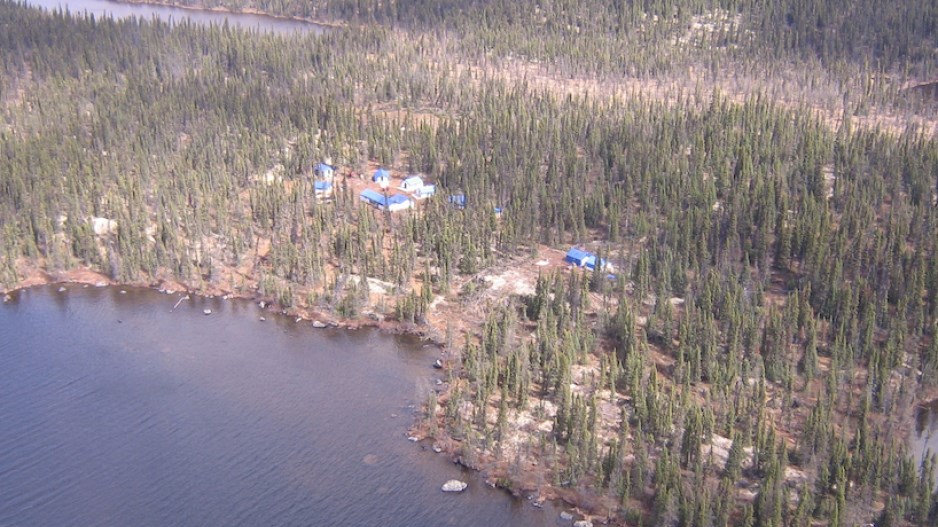Rare-earth metals like neodymium, dysprosium and praseodymium are called “critical elements” for a reason.
They are critical to things like the magnets used in electric vehicles (EVs) and wind turbines, and in a range of electronics.
If countries that have signed on to the Paris Agreement are to meet their targets for renewable energy and EV adoption, the demand for dozens of minerals and metals will increase dramatically, but rare earths could be become particularly choked, because most of these metals come from one country – China.
A report for the European Parliament has identified eight metals key to renewable energy that could be in critically short supply: gallium, indium, selenium, tellurium, dysprosium, neodymium, praseodymium and terbium.
“The current recycling rate of these metals is less than 1%, and material substitution possibilities are found to be very limited,” the report warns.
The value of rare-earth oxide for the production of rare-earth magnet metals totalled $1.44 billion in 2016. Longer-term forecasts project the demand for these “magnet metals” will soar to $6 billion by 2025.
So why hasn’t there been a rare-earth mining boom outside of China?
Blair King, a chemist who works in the environmental remediation field and writes about energy and climate issues on his blog, A Chemist in Langley, said one of the problems with rare earths is that processing them can produce some pretty nasty toxic waste – at least, the way it’s currently done in China.
He points to the vast artificial lake in Baotou, Inner Mongolia, which holds mine waste from a large rare-earth metals mine, as an example. It looks like some Stygian lake out of Dante’s Inferno, but hardly anyone knows about it.
The rare-earth mining that has created this toxic lake is what allows the western world to have smartphones, electric vehicles and wind turbines.
“Refining them is really hard and really dirty,” King said. “Refining rare earths gives off lots of radiologic waste. The waste can be very hard to get rid of.
“As a consequence, we’ve left the job of refining rare earths to the Chinese because nobody sees what they’re doing behind the wall. The consequence has been that they cornered the market.”
The question of how to supply a global energy transition with the critical materials required is something the environmental movement in the West appears to have difficulty reconciling.
“They say, ‘We want renewables, but we want someone else to do the dirty work of getting the base materials necessary to create these renewables,’” King said. “They’re very much NIMBYs in that they want the resource – they just don’t want the work done near them.
“Europe’s the same way. There’s no way it’s going to happen in Europe. The places where it’s going to happen is in the Congo, where they have huge resources of cobalt, and in Russia. Russia has the same geography that Quebec has, but a government system that doesn’t let little things like public opinion stop them from building a mine.”
Rare earths aren’t necessarily all that rare. But they do need to occur in specific types of geological formations for them to be economic to mine.
Canada is believed to have some good rare-earth mineralization, in Quebec and B.C., and there are a handful of Canadian junior exploration companies in the rare-earth space that are hoping to turn some of these deposits into mines.
Commerce Resources Corp. (TSX-V:CCE) has a rare-earth project called Ashram in northern Quebec that it is trying to develop, as well as a tantalum-niobium project in B.C., while Defense Metals Corp. (TSX-V:DEFN), formerly First Legacy Mining Corp., has a rare-earth deposit near Prince George called Wicheeda.
Despite a clear growing demand for rare-earth metals, investors seem to still be wary about investing in rare-earth projects, thanks in part to the spectacular flame-out of Molycorp, a rare-earth mining company in the U.S. that went bankrupt in 2015.
As for concerns about environmental impacts, Commerce Resources president Chris Grove said it is an issue in China but wouldn’t be in Canada, with its higher environmental standards.
“There is not anything fundamentally tied to the mining of rare-earth elements that is environmentally degrading in any regard,” Grove said. “It’s just the fact that, historically, the way the Chinese have done it has been horrific.”
It’s not just environmental impacts that have caused concern with respect to Chinese rare-earth production. China has also used its monopoly to control prices.
When it throttled back on dysprosium exports, prices went from $90 per kilogram in 2010 to $3,000 per kilogram in 2011, Grove said.
Substitutes were found for some electronics, and prices eventually came back down. But to date, no substitute for rare earths like neodymium and dysprosium have been found for magnets. Securing supplies of these metals outside of China will be critical to the decarbonization effort.
One Vancouver company, Medallion Resources Ltd. (TSX-V:MDL), is trying to avoid the problems associated with building a new rare-earth mine – cost being one of them – by trying a different approach.
It is working on a refining process that takes waste from mining of beach sand – which is mined for other metals and minerals like titanium – to produce monazite, from which rare earths can be further refined into elements like neodymium and praseodymium.
“I’ve got a bit of shortcut to get to production because I don’t need a lot of capital, because I’m already processing something that’s been mined,” said Medallion CEO Don Lay.
– Nelson Bennett




